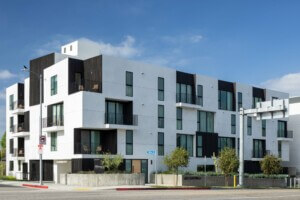Researchers at UCLA and the UC-Berkeleyaremapping neighborhood change in the Bay Area. TheUrban Displacement Projectuses government housing, land use, transportation, and Census data from 1990–2013 to find markers that represent turnover in housing, demographic shifts, and new investment.
Map of San Francisco and Oakland created by the Urban Displacement Project. (Courtesy TKTK)
Led by UC-Berkeley’sKaren ChappleandMiriam Zuk, researchers divided the nine-county Bay Area’s 1,569 Census tracts into low- and high-income tracts. Low-income tracts were defined as areas where 39 percent of households earn 80 percent less than each county’s median income, and high income tracts where less than 39 percent of households are considered low income. Low- and high-income tracts were categorized by residential displacement “risk factors.”
Displacement/Gentrification Typologies (Courtesy Urban Displacement Project)Significantly,的再保险port defines “gentrification” and “displacement” differently. Displacement is defined as a net loss of low income residents, while “gentrification” is tangible evidence of neighborhood investment and/or an influx of more affluent residents. This is important because, as the researchers found, gentrification in some areas happened before displacement, while in others, displacement comes first or occurs at the same time as gentrification.
Lower income tracts were assessed for risk of gentrification and displacement, while higher income tracts were assessed for displacement risk only. Overall, 51 percent of tracts did not experience significant displacement, while 48 percent are losing low-income residents. Researchers found that 422 tracts are “at risk” of displacing poor residents, while 165 are “currently experiencing displacement.”
The map is intended as a resource for community groups taking action to prevent displacement. The data is retrospective, shedding light on regional population trends. Planners, however, cannot use the data to make sure predictions about where gentrification and displacement is likely to occur in the future. The data doesn’t revealwhere displaced residents move to, or account for other qualitative factors that may prompt a move.
Transportation planning and developmentcan benefita lower-income area, if officials take into account the economic and social needs of the existing population. Some areas, includingEast Palo Alto, andMarin City, have actively forestalled displacement with housing subsidies and community organizing.














